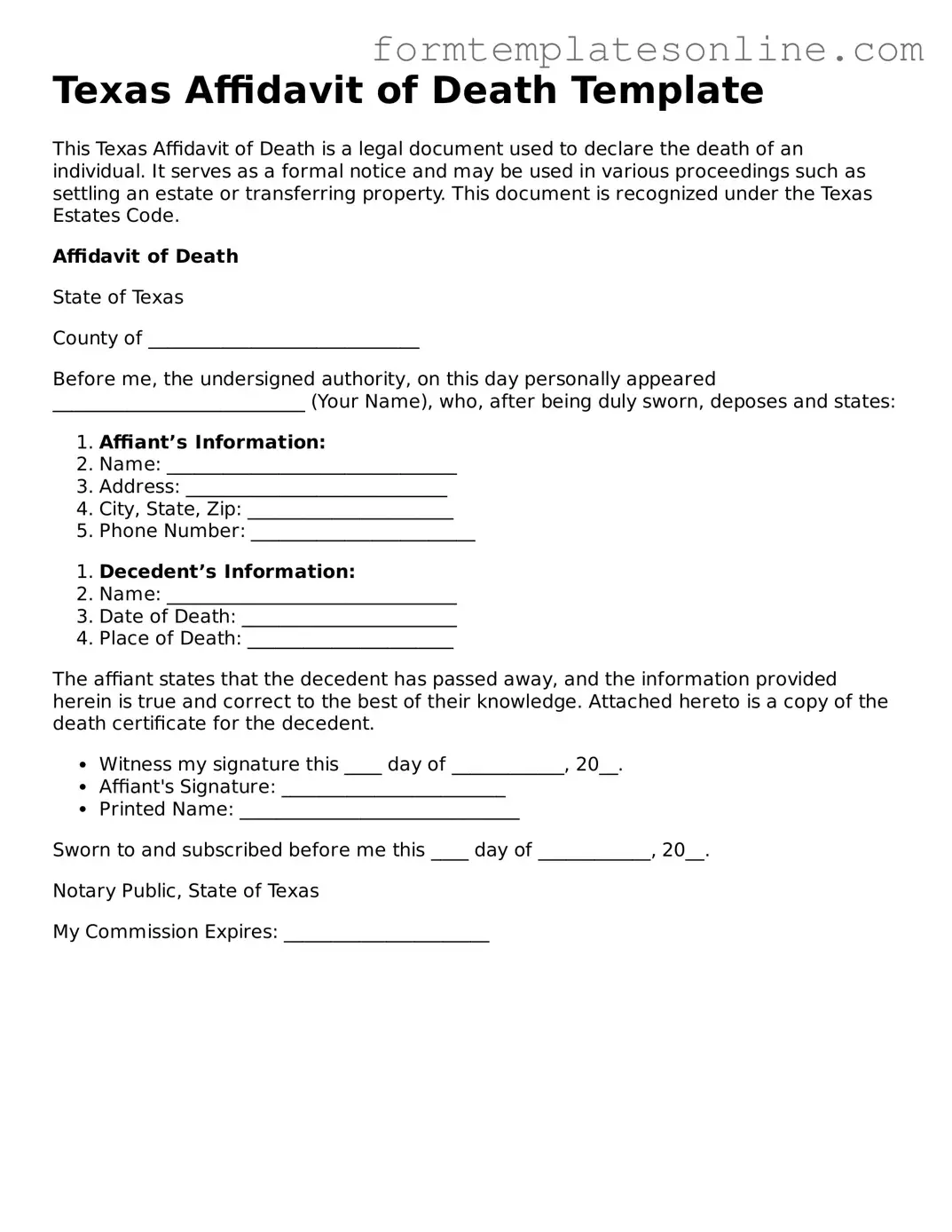Texas Affidavit of Death Template
This Texas Affidavit of Death is a legal document used to declare the death of an individual. It serves as a formal notice and may be used in various proceedings such as settling an estate or transferring property. This document is recognized under the Texas Estates Code.
Affidavit of Death
State of Texas
County of _____________________________
Before me, the undersigned authority, on this day personally appeared ___________________________ (Your Name), who, after being duly sworn, deposes and states:
- Affiant’s Information:
- Name: _______________________________
- Address: ____________________________
- City, State, Zip: ______________________
- Phone Number: ________________________
- Decedent’s Information:
- Name: _______________________________
- Date of Death: _______________________
- Place of Death: ______________________
The affiant states that the decedent has passed away, and the information provided herein is true and correct to the best of their knowledge. Attached hereto is a copy of the death certificate for the decedent.
- Witness my signature this ____ day of ____________, 20__.
- Affiant's Signature: ________________________
- Printed Name: ______________________________
Sworn to and subscribed before me this ____ day of ____________, 20__.
Notary Public, State of Texas
My Commission Expires: ______________________
